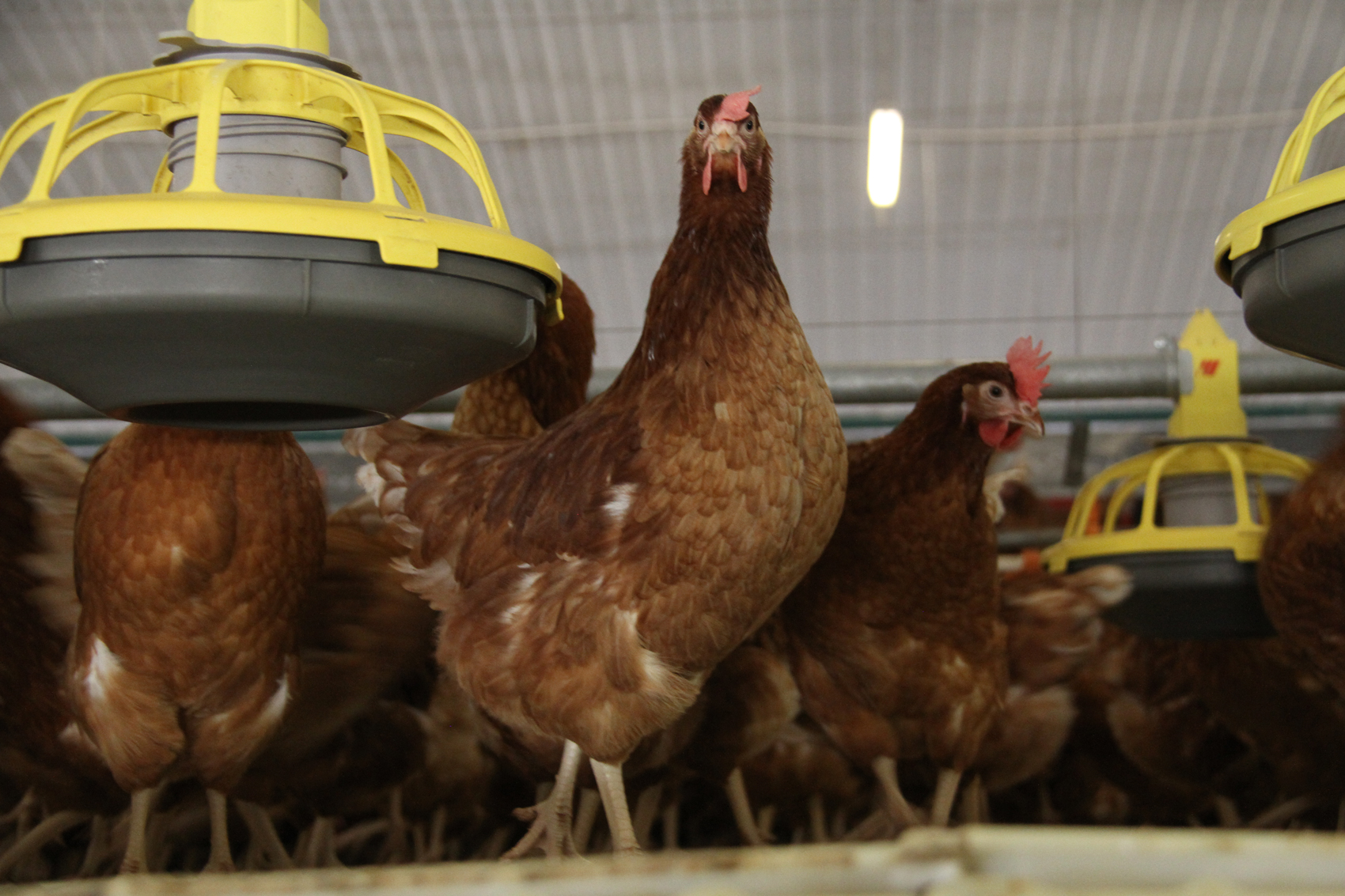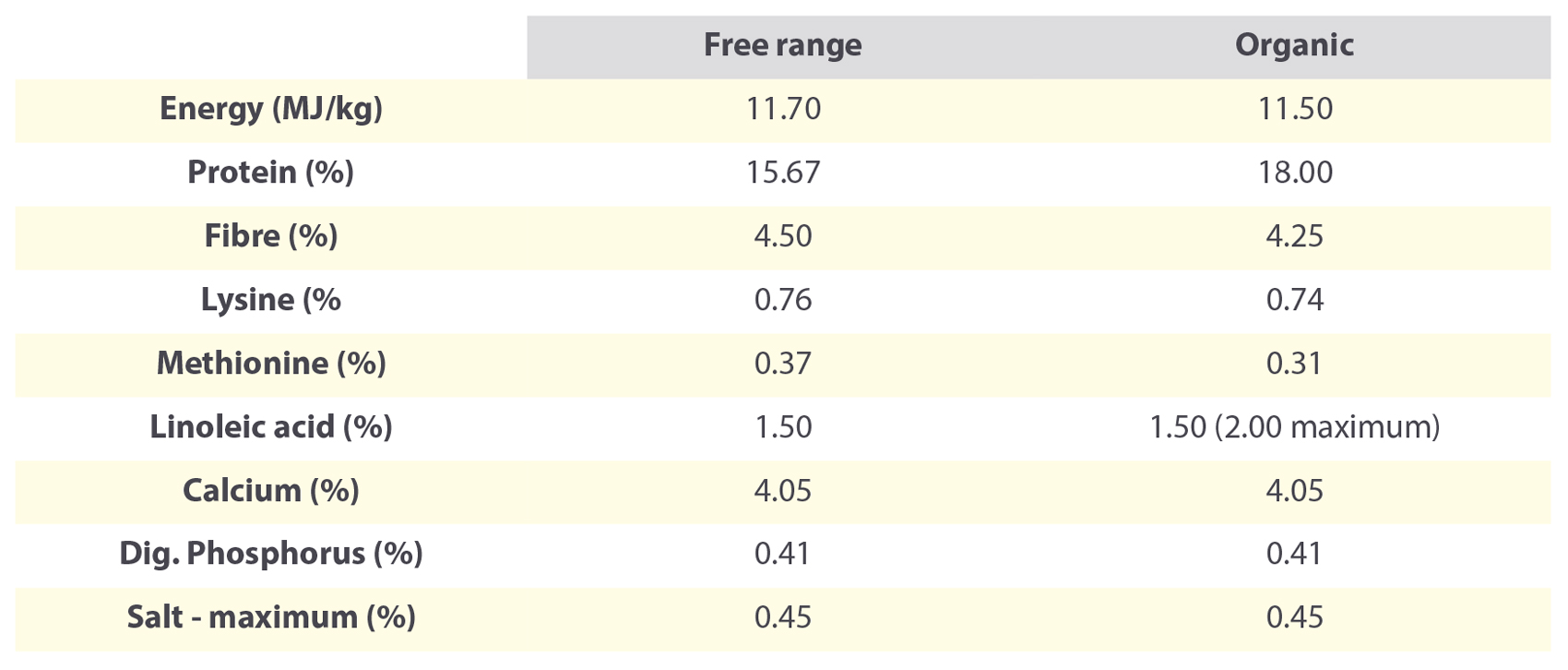Feed specifications for free range & organic costings being revised
Published on : 1 Mar 2024

Feed specifications are prepared for ADAS by a commercial poultry feed sector specialis
Feed costs in the free range and organic cost of production calculations are based on current prices quoted by feed compounders. To ensure that ‘like-for-like’ prices are obtained, a standard specification is provided as the basis for quotations. A single specification has been devised for free range production and a separate one for organic. These are intended to be typical of the whole laying cycle although it is accepted that in practice, different feeds may be used at different stages. The specifications are aimed at mid-production, 42 weeks of age. Feed specifications are prepared for ADAS by a commercial poultry feed sector specialist. The aim is to provide specifications that should achieve the stated flock performance, in terms of egg numbers, egg gradings and feed intake. Flock performance is different for free range and for organic production, reflecting the different constraints of organic standards. The current feed specifications were set for ADAS when the costings review was undertaken last year and for free range these were first reported in the Ranger in August 2023. As part of our checks on all costs, our feed sector specialist has reviewed the current specifications used and has recommended some changes, based on a composite of breed standards for commercial breeds. A summary of the new specifications is set out below. All figures are minimum values unless stated.
A summary of the new specifications
These new specifications will be used by ADAS as the basis for quotations from feed compounders in March. The costings in the next (April) edition of the Ranger will then incorporate these into the cost of production figures we prepare for free range and organic. Based on discussions to date, we understand that the changes made to the specifications are likely to result in higher feed costs in future. If this is the case, then the cost of production figures could be expected to increase, if all other costs were to stay the same.
